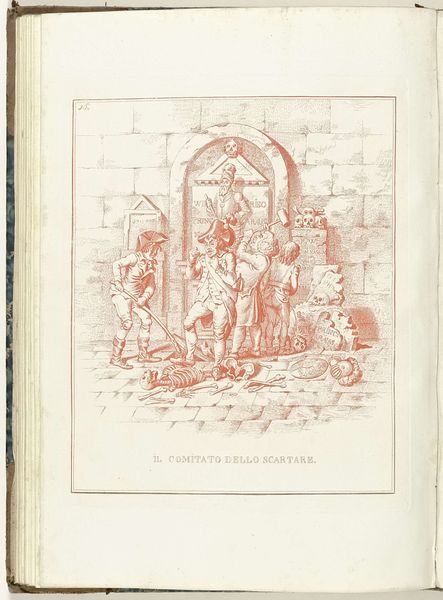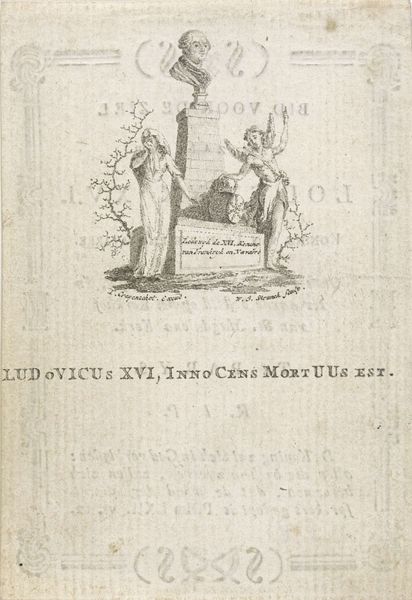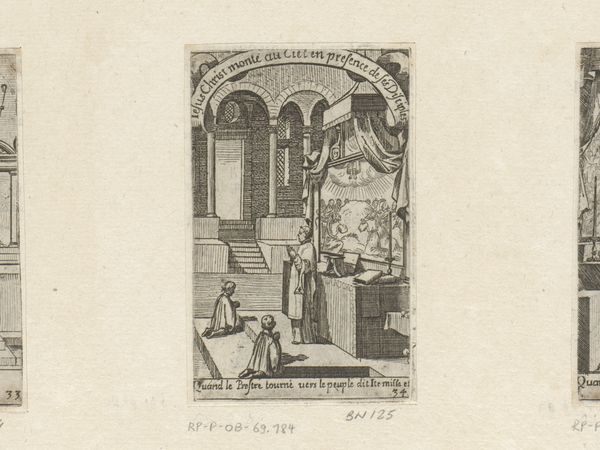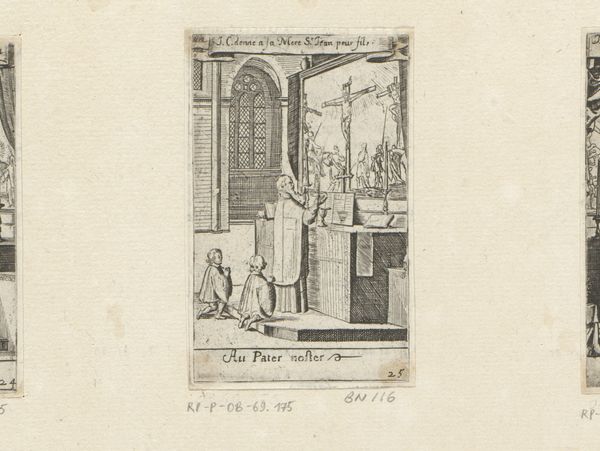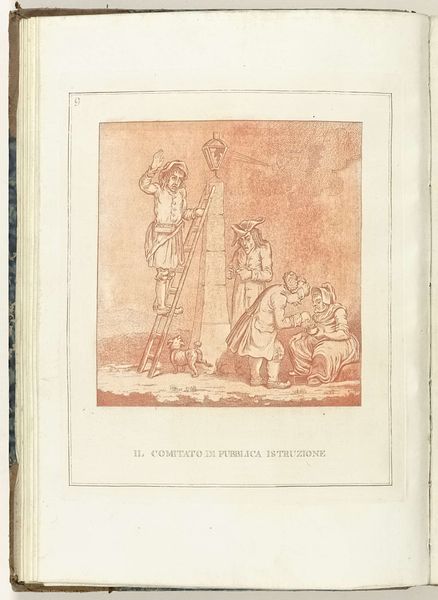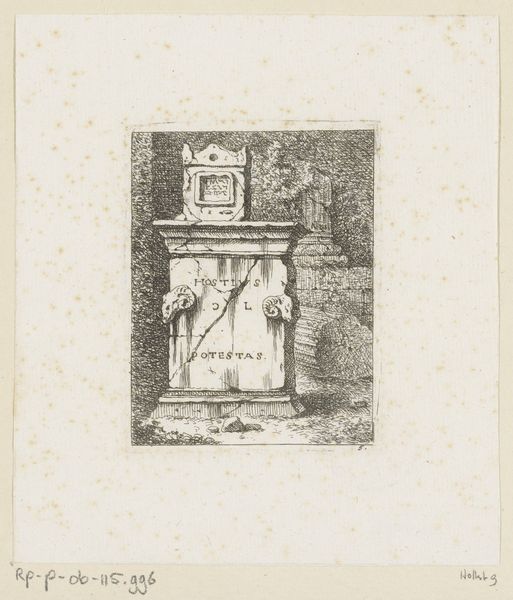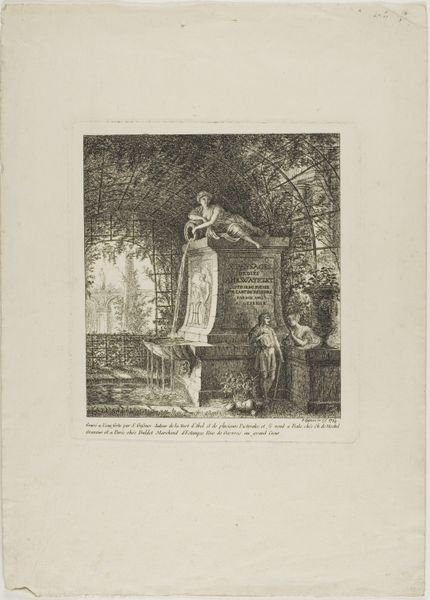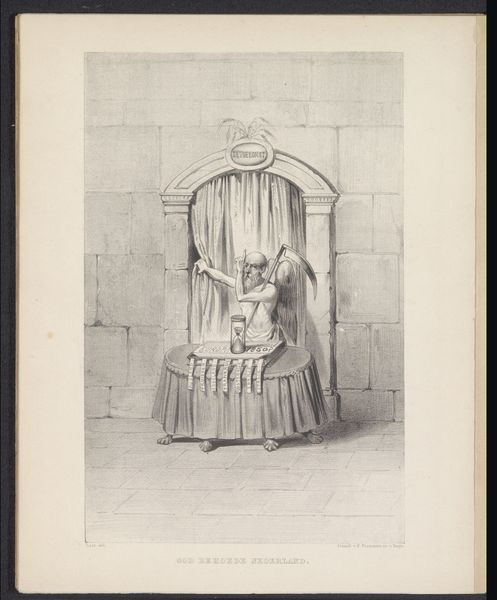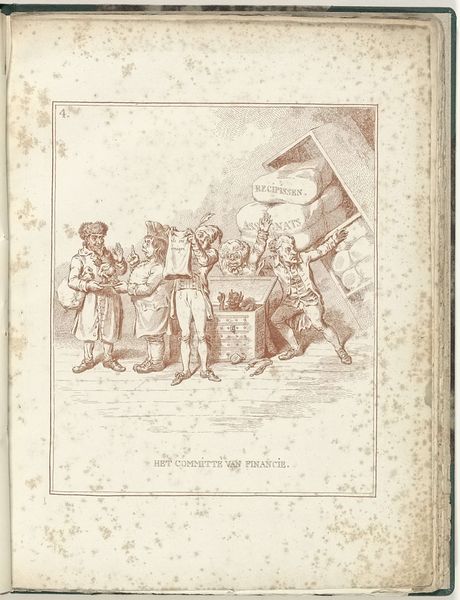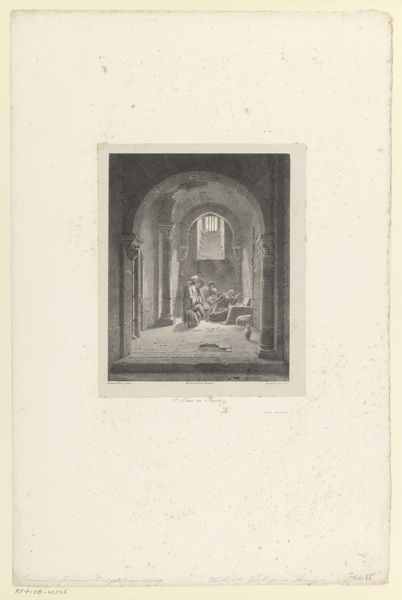
print, engraving
#
allegory
# print
#
figuration
#
romanticism
#
pen-ink sketch
#
line
#
history-painting
#
engraving
Dimensions: height 274 mm, width 219 mm
Copyright: Rijks Museum: Open Domain
Curator: Let's consider James Gillray's engraving, "Vader Tijd voor de poort naar de toekomst, 1795," created in 1795. What strikes you most upon viewing it? Editor: The starkness, I think. The composition feels severe, almost claustrophobic. The linear quality created by the print medium emphasizes the aged textures and creates a potent visual metaphor of time's inevitable march. Curator: It’s intriguing how Gillray, operating within the Romantic movement, engages with history through the figure of Time. The looming portal, ostensibly to the future, acts as a theatrical backdrop for the symbolic representation of aging and the ephemeral nature of power. He seems to be commenting on societal shifts during this tumultuous period. Editor: Indeed. I read the 'gate to the future' more cynically, like a political cartoon critiquing the naive utopianism that emerged from the French Revolution. Time is shown pushing it open, revealing it’s as much about decline and destruction as progress. And this relates to social shifts: Consider, for example, how engraving as a reproducible medium was crucial in disseminating political ideologies during that era. Curator: Note the figure of Chronos himself. His aged physique, juxtaposed with the instruments of time—the hourglass, the scythe—all seem to embody not only literal temporal passage but also the anxieties of a world on the cusp of enormous change. Do these objects denote that aging is good or bad, especially looking back at this historical turning point? Editor: Ambivalence perhaps? The hourglass is a common symbol, sure, but the added details of coins stacked around it really emphasizes something deeper, that corruption is almost guaranteed. What are those "coins," promises? A critique on societal institutions? Curator: Those coins are a fantastic point of symbolic intersection. If you interpret each stack as the consolidation of power by a political body, and the curtain signifies new leadership, there's some biting commentary about systems. It's interesting how art history and formalism interrelate in instances like this. Editor: Absolutely. It provides context. Reflecting upon this engraving and considering the era in which it was made provides me a new appreciation of Gillray’s craft. Curator: Agreed. Studying how form and context entwine allows us to understand the layers of meaning an image contains, resonating with audiences across time.
Comments
No comments
Be the first to comment and join the conversation on the ultimate creative platform.

